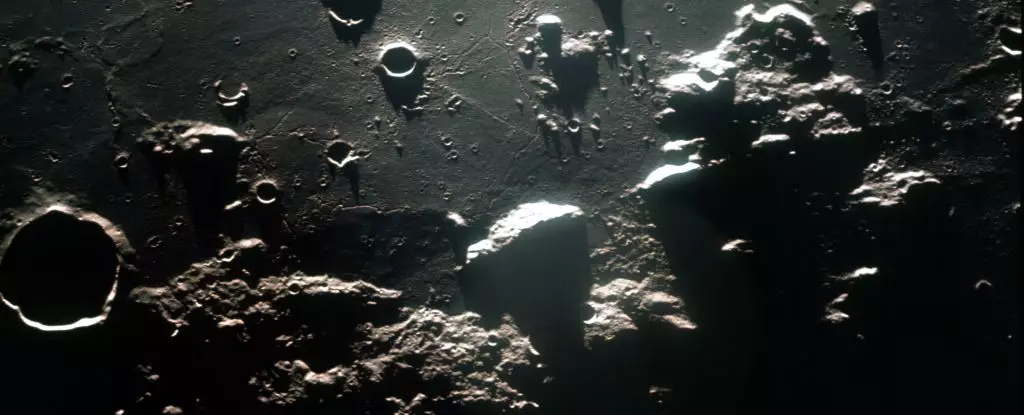Recent analyses of lunar mineralogy maps have revealed an unexpected abundance of water and hydroxyl across various terrains of the Moon, shattering the long-held belief that these resources are limited to polar regions. This new understanding has significant implications, not only for our comprehension of the Moon’s geological history but also for future human exploration. As planetary scientist Roger Clark articulates, these findings open the door for astronauts to discover exploitable water resources even in equatorial regions, providing crucial support for long-term lunar missions.
Historically viewed as an arid and barren landscape, the Moon indeed lacks visible liquid water—there are no lakes or rivers as we know them. However, a deeper investigation indicates that water is largely sequestered within the Moon’s rocky surface. Past studies highlighted specific areas, particularly polar craters, as potential reservoirs of water ice, shielded from sunlight’s desiccating effects. Yet, the recent research by Clark and his team has considerably broadened our perspective, suggesting that water can be found throughout the lunar surface.
The existence of water on the Moon complicates our understanding of its geological processes. According to Clark, both geological activity and impact events play a role in exposing water-rich materials. The study utilized data from the Moon Mineralogy Mapper (M3), an instrument onboard India’s Chandrayaan-1 mission, which collected detailed spectroscopic images of the Moon’s surface in 2008 and 2009. By analyzing the infrared light reflecting from lunar minerals, the researchers were able to identify the presence of water and hydroxyl across different latitudes.
Interestingly, while water-rich rocks can be unearthed by the violent impacts associated with cratering, the long-term stability of these resources is challenged by solar radiation. Over millennia, exposure to solar wind gradually depletes water, transforming it into hydroxyl. This duality suggests that the lunar surface is dynamic, with water-powered geological processes that might offer both challenges and opportunities for future explorers.
Moreover, the study highlights a fascinating phenomenon regarding lunar swirls—quizzical, spiraling features observed on the Moon’s surface. Although magnetism has been suggested as a possible explanation for their formation, Clark and his team noted that these swirls appear to be significantly depleted of water. This interesting connection leaves scientists with additional questions about the origins and evolution of these patterns.
The team’s findings also posit that the regions surrounding lunar swirls may contain remnants of ancient swirls that have since eroded. The water signature detected in these areas might provide crucial insights into the swirls’ histories and formation processes. Understanding these enigmatic features is paramount as they may reveal important clues about the Moon’s geological past and its interaction with solar phenomena.
The revelation that water-rich areas exist beyond the Moon’s polar regions presents a significant opportunity for future lunar missions. Initial preparations for long-term human presence on the Moon hinge on the ability to source water effectively. By utilizing hydroxyl-rich minerals, astronauts may devise methods to extract usable water—a cornerstone for sustaining life and supporting various activities on the lunar surface.
The implications of these findings extend beyond accessible water alone. Knowledge of the Moon’s complex geology is essential for planning safe landing sites, navigating potential hazards, and understanding how to utilize lunar materials for construction and life support. As more data collects, it becomes clear that the Moon is not merely a barren rock but a diverse environment that warrants further investigation and exploration.
As our understanding of the Moon continues to evolve, researchers have begun to unravel the intricate tapestry that constitutes its geology and resource distribution. The newfound understanding of water and hydroxyl presence across the lunar surface highlights the necessity for continued exploration and study. This information lays the groundwork for a promising future where lunar missions may no longer be limited to the search for resources in polar craters but can more broadly encompass the Moon’s entire landscape. In the quest for a permanent human presence on our celestial neighbor, every bit of knowledge gained brings us closer to unlocking the Moon’s potential.


Leave a Reply